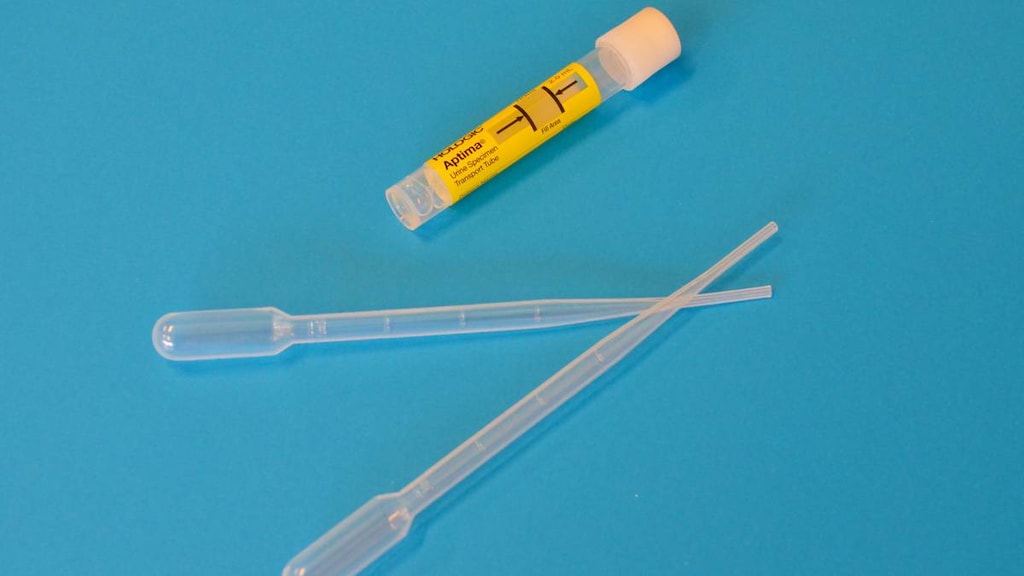How do you test for a urinary tract infection (UTI)?

Diagnosis of a urinary tract infection (UTI) usually includes evaluating your symptoms and testing your urine.
- The most common UTI test is a urinalysis. This is a urine sample that is checked for abnormalities.
- A urinalysis can be done in your doctor’s office. It checks your urine sample for bacteria that cause UTIs and white blood cells caused by the infection.
- While it should not be used for diagnosis, a different type of urinalysis can be done at home with an over-the-counter test kit. It can help you identify possible signs of infection to share with your doctor.
Urinary tract infection testing with your healthcare provider
Your healthcare provider will ask about symptoms and past medical history.
The most frequent test performed is a urinalysis. To prevent bacteria on your skin from contaminating your urine sample a clean catch urine sample may be recommended, You’ll be sent to a bathroom with sterile wipes and a collection cup for your urine.
To provide a clean urine sample:
- Women: Sit on the toilet, spread the labia, and wipe the labia area and the opening of the urethra with a sterile wipe front to back. Urinate briefly into the toilet with the labia spread. Then, stop the flow of urine, hold the cup in place, and urinate into the sterile cup provided.
- Men: Clean the head of the penis with a sterile wipe and urinate into the toilet briefly. Stop urinating and then urinate into the sterile cup.
This urine sample is then tested for bacteria and white blood cells. A healthy person can have bacteria in their urine, so a diagnosis of a UTI is made based on the results of the urinalysis along with symptoms.
In cases where a UTI keeps coming back, is serious or is complicated, a urine culture may also be done. Although this test is not needed for diagnosis, it can help find the best treatment because it will tell your healthcare provider what type of bacteria are causing the infection. It usually takes about two days to get results of the culture.
Although much less common, other tests may be done to find the cause of a recurrent or complicated UTI. An example would be a UTI caused by a stone in the kidney. These other less common tests include:
- Imaging tests. These may show a blockage, stone or abnormality in the urinary tract.
- Cystoscopy. A thin scope with a camera attached may be placed through the urethra into the bladder for viewing.
- Urodynamic testing. Studies may be done that measure and test how well the urinary tract stores and releases urine.
At-home urinary tract infection testing kits
There are home urinalysis tests that you can get without a prescription to test for a possible UTI.
These tests use a dipstick to test for nitrites or white blood cells. Nitrites are a way to test for bacteria, because bacteria produce these substances. Most home tests look for nitrites, and some also test for white blood cells.
To do this test:
- Hold the dipstick in a stream of urine or dip it into a urine sample.
- An area on the dipstick will change color if the test is positive.
- The color chart in the kit will help read the test strips and interpret the results.
These tests are inexpensive, and they can help identify a sign of infection. You can share these results with your doctor.
If you have symptoms of a UTI, a negative dipstick test does not always rule out infection. False negative results are not uncommon. If you still have symptoms after a negative home test, or have a positive test, medical care and treatment is the next step.
Symptoms of a urinary tract infection
Symptoms of a UTI that has not spread to the kidneys include:
- Burning pain when passing urine
- Frequent and intense urge to pass urine
The urinary tract includes:
- The kidneys
- The tubes that carry urine to your bladder (ureters)
- The bladder
- The tube that carries urine out of your body from your bladder (urethra)
Infection can spread to any of these parts and become more serious if not treated.
A UTI that has spread to the kidney or kidneys may cause:
- Belly pain
- Back pain under the ribs
- Fever
- Nausea or vomiting
Kidney infections are a more painful and serious type of UTI and require urgent medical treatment.
Article references
- National Institute of Diabetes and Digestive and Kidney Diseases (NIDDK). Bladder Infection (Urinary Tract Infection-UTI) Adults. Available at: https://www.niddk.nih.gov/health-information/urologic-diseases/bladder-infection-uti-in-adults. [Accessed September 25, 2020].
- MedlinePlus. Clean catch urine sample. Available at: https://medlineplus.gov/ency/article/007487.htm. [Accessed September 30, 2020].
- Simati B, Kriegsman B, Safranek S. FPIN's clinical inquiries. Dipstick urinalysis for the diagnosis of acute UTI. Am Fam Physician. 2013 May 15;87(10). Available at: https://www.aafp.org/afp/2013/0515/od2.html.
- AZO. AZO Test Strips. Available at: https://www.azoproducts.com/products/uti-medications/azo-test-strips. [Accessed October 1, 2020].




